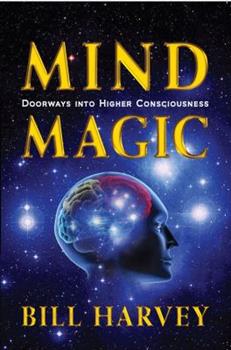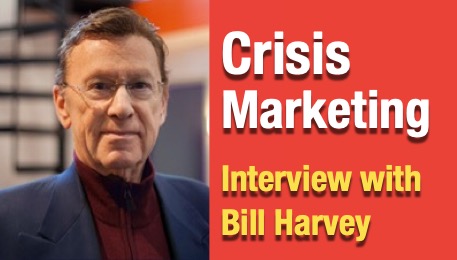How Should Brands Adapt During a Crisis? An interview with Bill Harvey
During times of crisis, such as the COVID-19 pandemic, brands changed their messaging and advertising. Instead of avoiding coronavirus-related content, Bill Harvey, founder of Research Measurement Technologies, contends that brands could use the resonance score – the level of similarity between the RMT DriverTags in branding and content consumed by viewers – to create impactful ads. Brands can take advantage of the opportunity to introduce new uplifting and inspiring messaging, recognizing and honoring the work of frontline workers and heroes who played critical roles during the pandemic.
During uncertain times, marketers often face the temptation to cut marketing budgets. But according to Bill Harvey, a marketing analytics pioneer and CEO of Research Measurement Technologies (RMT), this could be a big mistake.
🚀 Yes, I Want The 2024 Playbook!

Bill Harvey
In an interview with Jeff Greenfield, CEO of Provalytics, Harvey discussed the importance of marketing during times of contraction, emphasizing that brands should not pull back, but instead find new ways to connect with their audience.
One way brands can do this is through what Harvey calls “quality of life advertising.” Instead of focusing solely on product differences, brands should create inspiring, entertaining, useful, informative, educational, and uplifting messaging.
By doing so, they can bring value to consumers during difficult times and build brand loyalty. Harvey also emphasized the importance of understanding DriverTags.
Driver Tags
According to Harvey, RMT DriverTags are the scientifically proven behavior driving motivators which connect an ad and a brand to a person’s most important underlying subconscious motivations in life. They include emotional benefits, core values, mindsets, need states, character, and personality types. A DriverTag is an empirically derived variable identified by machine deep learning to cause behavioral change. There are 265 DriverTags.
For example, if a brand is promoting a new luxury car, the DriverTags might include the Motivations (macro clusters of DriverTags) Status/Prestige, Power, and Leadership. At a more nuanced level, an ad might include Need States (micro clusters of DriverTags) of Glamour and Perfectly Made. The more the DriverTags in an ad align with the audience’s interests and needs, the more effective the ad is likely to be. The same is true of the alignment between the DriverTags in the ad and the DriverTags in the media context (program, website, app, publication, etc.).
Harvey emphasizes that DriverTags were identified through data analysis, not mere creative intuition. By analyzing the performance of previous ads and identifying the key concepts that drove engagement, brands can hone in on their most effective DriverTags and use them to guide their marketing strategy.
Ultimately, the goal is to create ads that are as relevant and engaging as possible for the target audience, and that require a deep understanding of what drives their decision-making. By identifying and leveraging DriverTags, brands can increase their chances of resonating with their target audience and driving sales.
A recent analysis by the ARF Cognition Council found that Driver Tags explain 48% of sales.
Crisis Marketing
Harvey believes that there is an enormous opportunity for brands to connect with their audience during a crisis, such as the COVID-19 pandemic. Rather than immediately blocking their ads from coronavirus-related content, brands should find ways to pick up on the DriverTags in the content and create creative messaging that aligns with the current situation. This could include highlighting the heroes who are doing frontline research and caring for the ill, creating ads that inspire courage, and messaging that uplifts the spirits of those who are struggling.
Mind Magic
 In addition to his expertise in marketing and media, Bill Harvey is also an author of a book titled “Mind Magic: Techniques for Transforming Your Life.” The book is a compilation of techniques and mind tricks that Harvey has collected and refined throughout his life.
In addition to his expertise in marketing and media, Bill Harvey is also an author of a book titled “Mind Magic: Techniques for Transforming Your Life.” The book is a compilation of techniques and mind tricks that Harvey has collected and refined throughout his life.
Harvey began working on the book in his thirties when his friends suggested that he should publish his collection of tricks that had been tested and proven to work.
The book is 12 chapters, each focusing on a specific trick, such as avoiding hasty closure, breaking assumptions, and changing perspective.
The techniques presented in the book are practical and can be applied to various aspects of one’s life, from improving decision-making to enhancing creativity.
The book has been well-received and has been used as a course text at universities such as NYU, UCLA, West Point, the Naval War College, and more.
Brand Marketing
Brands must be strategic and creative in how they adapt to the rapidly changing world during a crisis. According to Harvey, brands must use data to understand the consumer mindset and to ensure that the message is both relevant and resonant with the audience. By incorporating DriverTags, brands can drive home their message and create a more powerful impact.
Moreover, it is equally important for brands to understand the value of branded content that isn’t solely focused on selling a product. This strategy of quality-of-life advertising, as Harvey calls it, can be incredibly effective in communicating the brand’s values and creating an emotional connection with the audience. Finally, the importance of maintaining a consistent presence in the market, even during a crisis, cannot be overstated. Brands that pull back risk losing market share and their connection with the audience. Brands must rise to the challenge and adapt creatively to remain relevant and connected to consumers during a crisis.
Who is Bill Harvey?
Bill Harvey is a highly accomplished marketing and advertising research expert with over 50 years of experience in the industry. He is the co-founder and former Chairman of the Board of TRA, Inc., a consumer behavior data and analytics company. He is also the founder of his consulting firm, Bill Harvey Consulting, which advises clients on research and marketing strategies.
Throughout his career, Harvey has contributed significantly to the advertising industry, publishing numerous articles, white papers, and research studies on advertising and consumer behavior. He is also the author of several books, including “The Art of the Media Age,” “How to Prevent Your Advertising from Sucking,” and “Mind Magic,” which provides readers with 12 techniques for tapping into their creativity and problem-solving abilities.
Harvey has received numerous awards and recognition for his contributions to the industry, including the Media Research Council’s Lifetime Achievement Award and the American Association of Advertising Agencies’ (4A’s) highest honor, the Advertising Person of the Year Award. He has also been recognized as one of Advertising Age’s 100 most influential media professionals and is a frequent speaker at industry events and conferences. Harvey holds a Bachelor of Science degree in electrical engineering from Princeton University and a Master of Business Administration degree from Harvard Business School.
What are Driver Tags?
RMT DriverTags are the scientifically proven behavior driving motivators which connect an ad and a brand to a person’s most important underlying subconscious motivations in life. They include emotional benefits, core values, mindsets, need states, character, and personality types. A DriverTag is an empirically derived variable identified by machine deep learning to cause behavioral change. There are 265 DriverTags.
For example, if a brand is promoting a new luxury car, the DriverTags might include the Motivations (macro clusters of DriverTags) Status/Prestige, Power, and Leadership. At a more nuanced level, an ad might include Need States (micro clusters of DriverTags) of Glamour and Perfectly Made. The more the DriverTags in an ad align with the audience’s interests and needs, the more effective the ad is likely to be. The same is true of the alignment between the DriverTags in the ad and the DriverTags in the media context (program, website, app, publication, etc.).
Harvey emphasizes that DriverTags were identified through data analysis, not mere creative intuition. By analyzing the performance of previous ads and identifying the key concepts that drove engagement, brands can hone in on their most effective DriverTags and use them to guide their marketing strategy.
Ultimately, the goal is to create ads that are as relevant and engaging as possible for the target audience, and that require a deep understanding of what drives their decision-making. By identifying and leveraging DriverTags, brands can increase their chances of resonating with their target audience and driving sales.


